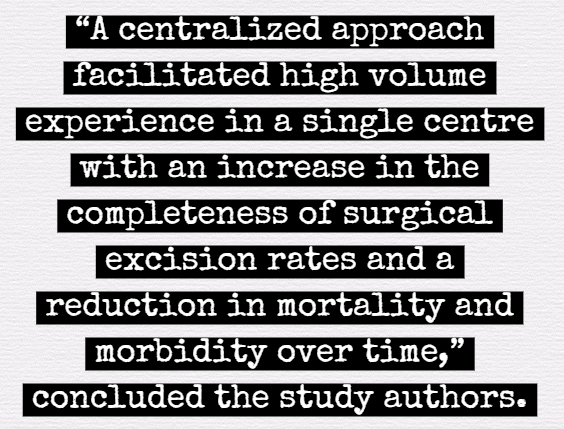Month: May 2015

Italian Study: Mesothelioma Cases Concentrated Near Asbestos-Using Industries
Italian researchers looked at the geographic distribution of malignant mesothelioma cases and found that they tend to be clustered around cement manufacturing, shipbuilding, and other industrial facilities.
A team lead by Marisa Corfiata analyzed 15,322 incident cases of malignant mesothelioma from the period 1993 to 2008 recorded by the Italian national mesothelioma registry. Subjects were interviewed and asbestos exposure—the only known cause of mesothelioma—was defined for 11,852 of 15,322 cases. Cases were then then mapped and geographic clusters identified for the Northwest, Northeast, Centre, and South & Islands regions of Italy. Finally, case clusters were identified according to one of three asbestos exposure modalities: environmental, familial, and occupational.
According to the researchers, the main sources of mesotheliomas are cement manufacturing plants and shipyards, while several case clusters were also found in the vicinity of asbestos textile facilities.
“The largest [malignant mesothelioma] clusters, per number of cases or municipalities included were found, indeed, where the biggest asbestos cement plants or shipyard facilities were located,” writes Corfiata. “Overall, it should be noted that an asbestos cement industry, an asbestos textile industry or a harbor industrial area inclusive of shipyards partially contribute to exposure of MM cases in about 75% of the clusters identified.”
Diving deeper into the numbers, the researchers note that the high number of mesothelioma cases among women in the largest asbestos-cement industry clusters may be attributable to familial exposure, or so-called “take home” exposure, which occurs when one family member brings home asbestos fibers on their body or clothing and exposes other family members. For the shipyard clusters, mesothelioma is mainly associated with naval construction and/or repair activities.
The researchers also note a number of other industrial asbestos exposure sources, including steel manufacturing plants, metal product manufacturing, oil refineries, chemical facilities, power plants, railway carriage construction and maintenance, the automotive industry, glass industry, and food processing. These are many of the same industries that have historically in the United States produced occupational asbestos exposure.
But unlike the United States, Italy has enacted a national asbestos ban. The study points out that Italian asbestos consumption peaked later in Italy than in the U.S., and, given the 35-40 year latency period of mesothelioma, “a high number of cases is still expected in Italy in the next few decades.”
Mesothelioma incidence is thought to have already peaked in the United States, but as long as the use of asbestos products remains legal in this country, the carcinogenic mineral fiber continues to pose a threat to public health. Each year in the U.S. approximately 3,000 people are diagnosed with mesothelioma, while 10,000 total death are attributed to asbestos.
You can read the full text of the Italian report “Epidemiological patterns of asbestos exposure and spatial clusters of incident cases of malignant mesothelioma from the Italian national registry” at BMC Cancer.

Patients Often Deal With Blood Clots
Blood clots are one side effect mesothelioma patients must deal with. Patients with cancers that occur in the lungs and abdomen, such as mesothelioma, are at greater risk of developing blood clots. Although cancers that have spread from their original site, or metastasized, can put patients at risk too. Often physicians look at age, race and ethnicity to determine risk factors, but treatments including surgery, chemotherapy and radiation are all contributing factors. The good news is that blood clots can be treated.
A blood clot can also be called a thromboembolism. There several different types that may develop in cancer patients. One type is a venous thromboembolism that develops in a vein. A deep vein thrombus, or a DVT, usually occurs in the leg, thigh or pelvis; whereas, a pulmonary embolism is a blood clot that has traveled to the lung from another area, and can be life-threatening. Thirty eight percent of patients who have had surgery will be diagnosed with a blood clot, but they are treatable.
Blood clot symptoms include pain, swelling and redness in the affected area. Usually these are seen in the calf, leg or thigh. The symptoms of pulmonary embolism are shortness of breath, chest pain, and rapid breathing and heartbeat. Sometimes the person will also cough up blood. If you experience any of these conditions, you need to notify emergency personnel immediately.
Patients who have pulmonary embolisms are usually treated with Heparin for 5-10 days and then are converted to an oral medication. Depending on your treatment, doctors may order a non-invasive ultrasound of your legs, pelvis, arms and neck. It is easy and painless- a warm gel is applied to the affected area, and the ultrasound handle is placed on the area being scanned. Attached to the device is a monitor that will show your vessels and will reveal if there is a clot in one of your extremities or pelvis. If your physician is suspicious that you may have a pulmonary embolus, you will have a CT scan that specifically looks for a clot in your lungs.
Anticoagulants are the drugs that help break up these clots and stop other clots from forming. Compression stockings can also be used (they are a type of support hose). If you are receiving inpatient care, you may receive therapy to get you walking to keep the blood circulating as much as possible. Often times people have pneumatic boots on that help promote circulation while in bed. This is a small machine that has plastic leggings that squeeze your legs intermittently. It is painless, and most patients don’t mind them.
This may all sound overwhelming, but I want to cover information about issues you may have to manage as a mesothelioma patient. Always keep your medical team informed of any pain or symptoms that suddenly appear.
If you have any questions about any aspect of your mesothelioma care, please email me at [email protected].

Experience Matters for Mesothelioma Treatment, Studies Show
MesotheliomaHelp encourages patients diagnosed with mesothelioma to seek care at a facility that specializes in treatment of the rare cancer in order to maximize their chances of having a positive outcome, and two recent studies out of the United Kingdom suggest that this advice could help improve patient survival.
One study, published in the journal Lung Cancer, looked at 8,470 cases of malignant pleural mesothelioma reported in the UK. Patients were mostly male with a median age of 73. Median survival was 9.5 months, but survival differed sharply by patient health status and tumor growth pattern. It also differed by cancer network from 209 days to 349 days.
“There is significant variation in care patterns and outcomes that may reflect limited expertise in area[s] with low [mesothelioma] incidence,” concluded the study authors, led by Dr. Paul Beckett of the royal College of Physicians, London.
A second study, published in Colorectal Disease, analyzed 1,200 surgical cases of patients with abdominal malignancy, including 65 peritoneal mesothelioma patients, over a 20 year period (1994-2014). The study period was divided per quartile of 300 patients so that outcomes over time could be compared. Two of the outcomes recorded were patients undergoing complete cytoreduction (removal of all visible tumors) and 30-day mortality (post-surgery).
The proportion of patients per quartile undergoing complete cytoreduction was 60.7%, 65%, 77%, and 80.3%, while patient mortality per quartile was 3%, 1%, 0.7% and 0.7%. In addition, complete cytoreduction in peritoneal mesothelioma patients was associated with a 5-year survival rate of 76%. Typical 5-year survival for mesothelioma patients is between 5% and 10%, according to the American Cancer Society.

Although both of the studies are out of the UK, they underscore the importance of choosing a cancer center with significant mesothelioma experience. Because mesothelioma is a rare cancer in the general population, most oncologists see very few patients with this disease and may not be familiar with how to effectively treat it. The busiest mesothelioma centers also often offer patients the opportunity to enroll in clinical trials that provide access to innovative treatments.
Being treated at a specialized mesothelioma center could very well involve traveling out of town or even out of state. This can mean not only giving up the comforts of home, but also incurring travel charges.
For those who do travel out of town for treatment, the American Cancer Society offers free accommodations at its 31 Hope Lodge locations. Another resource—Joe’s House—doesn’t offer free stays but does help cancer patients find accommodations close to treatment centers. Patients may also be able to find housing through the hospital that is treating them.
For a comprehensive list of top mesothelioma centers that’s searchable by state and zip code, please visit the MesotheliomaHelp Hospitals page. You can similarly search the site for mesothelioma specialists.
Know more about Mesothelioma and how you can deal with it.
Mesothelioma Help Scholarship – Great Opportunity to Make a Difference
Once again, I was humbled and honored to be a judge for the spring Jan Egerton and Don Smitley Mesothelioma Scholarship contest. Jan was an inspiring woman who I was happy to be acquainted with and, of course, Don was my father. A scholarship memorializing these two amazing mesothelioma warriors seems only fitting.
As I read through each entry, I was astounded at the interest and compassion shown by each student. They really did an excellent job researching the topic and many stated how much they learned through the process. I gain a lot of hope in knowing that teens and young adults are becoming aware of this disease and showing a genuine interest in how they can help.
These youths are the next generation of up-and-coming professionals and philanthropists, and it will be up to them to continue the fight against mesothelioma. I find comfort in knowing that the torch will be passed to such motivated individuals.
Educating ourselves about the dangers of asbestos and mesothelioma is the first step in eradicating this cancer. It is our responsibility as a community to make sure that this is done and done well. I am extremely proud of the scholarship participants for their hard work and commitment to serving others.
I pray that you all continue on your journey to help those with mesothelioma, believing in a cure!
Free Mesothelioma Patient & Treatment Guide
We’d like to offer you our in-depth guide, “A Patient’s Guide to Mesothelioma,” absolutely free of charge.
It contains a wealth of information and resources to help you better understand the condition, choose (and afford) appropriate treatment, and exercise your legal right to compensation.
Download Now